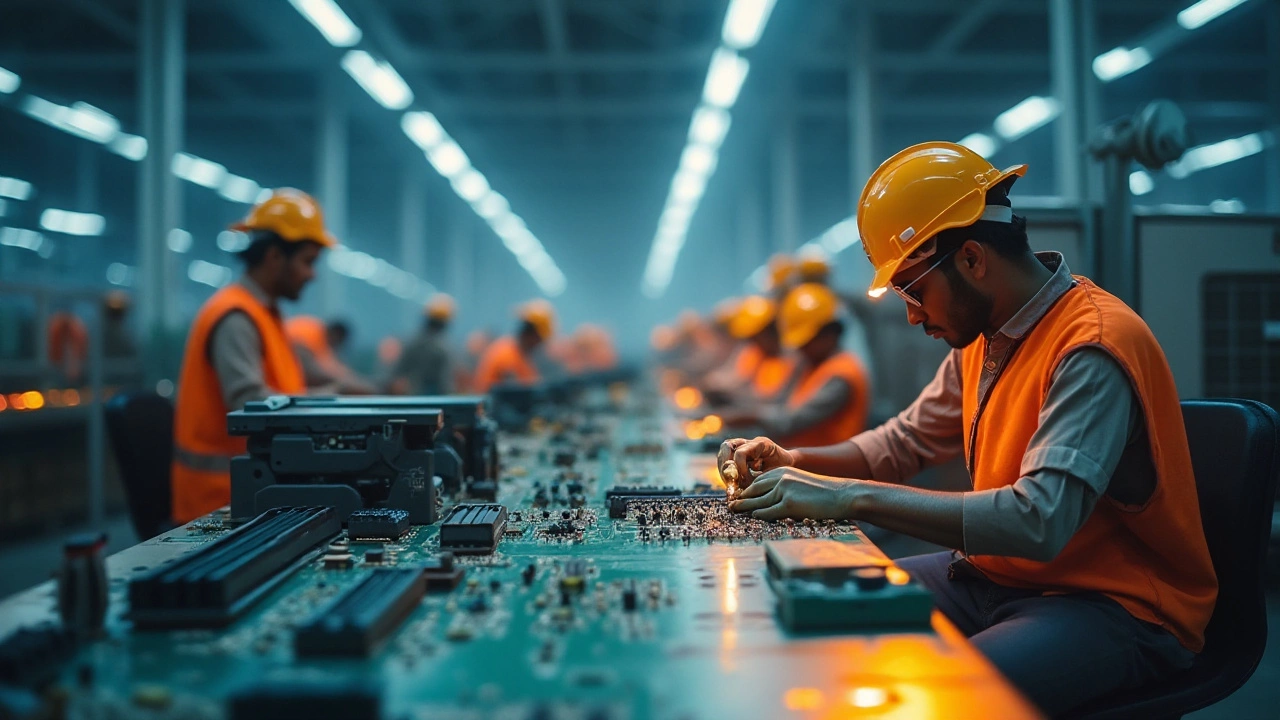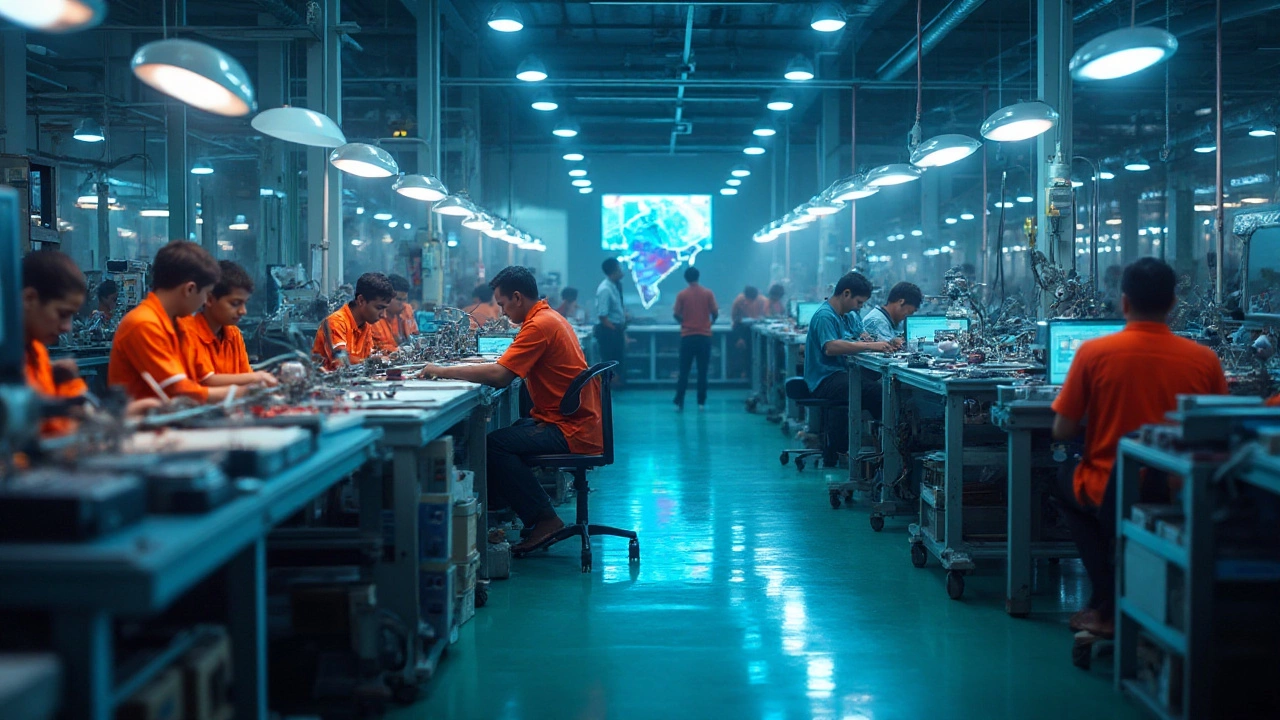- Daily Earnings of Food Trucks: Insights and Tips Jan 20, 2025
- Who Bought Toyota to India? The Real Story Behind Toyota’s Entry into the Indian Market Nov 20, 2025
- India's Top Exported Cars: Most Popular Models and Global Destinations Revealed Jun 30, 2025
- Leading Pharma Companies in India 2024: Top 5 Picks Jan 10, 2025
- What is the richest furniture company in the world? Nov 21, 2025
Electronics Manufacturing in India: What’s Shaping the Future
India’s electronics scene is buzzing like never before. From smartphones that land on your doorstep to high‑performance AI chips, the country is moving from a big market to a big maker. Companies, start‑ups, and government bodies are all pitching in, and the results are worth a look.
One big driver is the "Make in India" push. The government has rolled out tax breaks, land allocations, and fast‑track approvals to lure investors. That’s why you’ll hear a lot about new fabs, specialised assembly lines, and even whole cities being billed as electronics hubs.
Latest Industry News
Recent headlines show AI chip production finally taking root in Indian soil. A handful of firms now design and fabricate processors that can run machine‑learning workloads locally, cutting reliance on imports. At the same time, the city often called the "electronics capital" – a blend of startups and global giants – is drawing talent like a magnet.
On the global stage, India’s ranking in electronics manufacturing has jumped noticeably. While China still leads, India is closing the gap thanks to aggressive capacity expansion and a surge in domestic demand. Analysts point to a mix of policy support and a growing middle class as the key factors.
Other stories focus on partnerships that matter. For example, Nvidia’s reliance on TSMC for chip production highlights how supply chains span continents. India watches these moves closely, learning where to invest in equipment and talent.
Key Players & Opportunities
Who’s running the show? Traditional powerhouses like Samsung and Foxconn have set up plants, but Indian firms are stepping up fast. Companies that once only assembled gadgets are now moving upstream into design and testing. This shift opens doors for local engineers, component makers, and service providers.
If you’re eyeing a niche, consider wearables and smart home devices. The demand for affordable, locally made gadgets is soaring, especially in tier‑2 and tier‑3 cities. That demand fuels a need for small‑batch production lines, which are cheaper to run than massive fabs.
Another hot area is semiconductor manufacturing. While building a full‑scale fab is capital‑intensive, India is focusing on specialized processes like MEMS, RF, and power devices. These segments need less space and can still command high margins.
Overall, the sector’s growth means more jobs, more innovation, and more export potential. Whether you’re a supplier, a designer, or an investor, the landscape offers clear paths to get involved.
So, what’s the next step for you? Keep an eye on policy updates, watch where new plants are announced, and think about the specific part of the chain where you can add value. India's electronics manufacturing story is still being written, and there’s a good chance you could be part of the next chapter.
Which Country Leads the Electronics Industry? A 2025 Comparative Guide
- Aarav Sekhar
- Oct 9, 2025
Explore which nation truly leads the electronics industry in 2025. Compare R&D spend, patents, fab capacity, exports, and future trends to see who tops the leaderboard.
AI Chip Manufacturing in India: Who Makes Them and What's Next?
- Aarav Sekhar
- Jul 28, 2025
Discover which companies are making AI chips in India, how India is building its semiconductor industry, and what it means for AI-driven innovation.
India's Electronics Hub: Exploring the Capital of Innovation
- Aarav Sekhar
- Apr 10, 2025
India's title of electronics capital isn't bestowed lightly. The region that holds this title is a dynamic blend of technological prowess and relentless innovation, buzzing with activity and growth. From startups to global giants, the area attracts a variety of players driving the electronics industry forward. In this article, we'll unveil the city leading this charge, explore the forces driving its success, and offer some handy insights into what makes it tick.
India's Electronics Manufacturing Rank: A Deep Dive
- Aarav Sekhar
- Mar 3, 2025
India's position in the global electronics manufacturing scene has been rapidly changing. As of recent years, it has made significant strides in becoming a key player. This article explores India's current rank, the factors influencing its growth, and what this means for the future. We'll look into government initiatives and challenges faced by the industry. Discover how India's journey affects the global market as well.
Who Dominates the Electronics Manufacturing Industry Today?
- Aarav Sekhar
- Jan 13, 2025
As the world continues to demand more advanced technology, the electronics manufacturing industry has become a hotbed of global competition. While several countries have staked their claim as leaders in this field, understanding the strengths each brings to the table can provide insight into who truly dominates. This article explores the key players in electronics manufacturing, with a particular focus on India's burgeoning role and how it compares to traditional giants.
Nvidia's Partnership with TSMC in Electronics Manufacturing
- Aarav Sekhar
- Dec 18, 2024
In the ever-evolving world of electronics manufacturing, Nvidia's relationship with the Taiwan Semiconductor Manufacturing Company (TSMC) is of significant interest. As a leading designer of graphics and computing processors, Nvidia heavily relies on TSMC's advanced chip fabrication capabilities. TSMC's pivotal role in Nvidia's supply chain impacts the semiconductor industry on a global scale. Exploring this partnership provides insights into the strategic decisions that shape the tech industry. The collaboration exemplifies the interconnectedness of technology firms in driving innovation today.
Top Countries Leading in Electronics Manufacturing: India and Beyond
- Aarav Sekhar
- Dec 3, 2024
The electronics manufacturing industry is a rapidly evolving landscape with a few key players dominating the global market. This article explores which country leads as the largest producer of electronics and delves into India's emerging role in this sector. As technological advancements continue, India's growth in electronics production is creating a significant impact on the global stage. Discover the factors propelling India forward and how it measures up against established giants like China.
Top Electronics That Are Shaping India's Market
- Aarav Sekhar
- Nov 25, 2024
India's electronics market is evolving rapidly, driven by both domestic demand and manufacturing trends. With a growing middle class and an increasing emphasis on technology, certain electronic devices have become indispensable. This article explores what drives the demand for these devices, including smartphones, home appliances, and wearable tech. We'll also delve into the impact of government policies and the 'Make in India' initiative on the production and availability of these electronics. Insights into consumer preferences and future growth prospects offer a comprehensive view of the electronics landscape in India.







